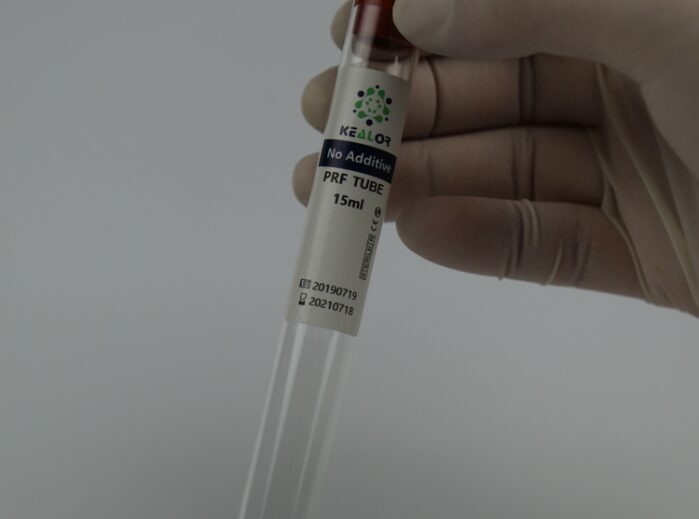Introduction to PRF and PRP
Exploring the revolutionary advancements in dental regenerative therapies, this article compares Platelet-Rich Fibrin (PRF) and Platelet-Rich Plasma (PRP), shedding light on their uses, benefits, and which stands out as the superior choice in modern dentistry.
Understanding PRP: Basics and Benefits
Delve into the world of PRP, its extraction process, and how it has been a game-changer in promoting healing, enhancing bone grafting, and improving surgical outcomes in dental procedures.
Delving into PRF: Advancements and Advantages
Explore PRF, a second-generation platelet concentrate, offering a unique fibrin matrix and slow release of growth factors, which advocates claim leads to better healing and tissue regeneration.
PRP in Dentistry: Procedures and Potential
Examine the various dental procedures where PRP is utilized, from periodontal therapy to implant surgery, and discuss the potential it holds for improving patient outcomes.
PRF in Dentistry: The New Frontier
Discover how PRF is being integrated into dental practices, its role in procedures like socket preservation, and the purported advantages it has over its predecessor.
Comparative Analysis: PRF vs PRP Efficacy
Dive deep into the comparison between PRF and PRP, evaluating their effectiveness, healing times, and the science backing each technique.
Side Effects and Risks
Discuss the potential risks and side effects associated with PRF and PRP, ensuring patients have a balanced and informed perspective.
Patient Selection Criteria
Outline the criteria for selecting suitable candidates for PRF and PRP therapies, emphasizing personalized treatment plans for optimal outcomes.
Clinical Evidence and Case Studies
Present clinical studies and case examples demonstrating the results of PRF and PRP in various dental scenarios.
Dentist and Patient Testimonials
Share testimonials and experiences from both dentists and patients, offering a real-world view of the impacts of PRF and PRP in dentistry.
Cost Implications and Accessibility
Analyze the cost-effectiveness of PRF and PRP treatments and discuss their accessibility to the average patient.
Future Trends in Dental Regenerative Therapy
Look ahead at the future of regenerative therapies in dentistry, the potential advancements in PRF and PRP, and how they might shape treatment options.
Concluding Thoughts on PRF and PRP
Summarize the findings, offer a perspective on the better choice between PRF and PRP based on current evidence, and provide guidance for patients and practitioners.
ANSWER FAQs:
How do PRF and PRP differ in their preparation and application?
PRF (Platelet-Rich Fibrin) and PRP (Platelet-Rich Plasma) differ primarily in their preparation. PRP involves a faster centrifugation process separating platelets to create a plasma layer, which is then applied to the treatment area. PRF, on the other hand, is obtained through a slower centrifugation process that doesn’t use anticoagulants, resulting in a fibrin matrix that includes platelets, leukocytes, and growth factors. In application, PRP is usually injected, while PRF can be used as a membrane or plug for healing purposes.
Which therapy offers quicker healing and better outcomes for dental procedures?
The choice between PRF and PRP depends on the specific dental procedure and individual patient factors. Generally, PRF is believed to offer better outcomes for bone and soft tissue healing due to its slow and sustained release of growth factors. PRP, however, may provide quicker healing in certain scenarios due to its higher concentration of platelets and growth factors.
What are the potential risks associated with PRF and PRP treatments?
Both treatments are relatively safe since they use the patient’s blood, reducing the risk of allergic reactions or infections. However, potential risks include infection at the injection site, pain or discomfort, and, in rare cases, tissue damage. The skill of the practitioner also plays a crucial role in minimizing these risks.
How should I decide between PRF and PRP for my dental condition?
The decision should be made in consultation with a dental professional who can assess your specific condition, medical history, and treatment goals. Factors to consider include the type of dental procedure, expected recovery time, and any personal health considerations. The dentist will evaluate the potential benefits and limitations of each treatment to recommend the most suitable option.
Are PRF and PRP treatments covered by insurance?
Coverage for PRF and PRP treatments varies widely among insurance providers and plans. Generally, these treatments are more likely to be covered if deemed medically necessary rather than purely cosmetic. It’s crucial to consult with your insurance provider and dental office to understand the coverage specifics and any out-of-pocket costs.








